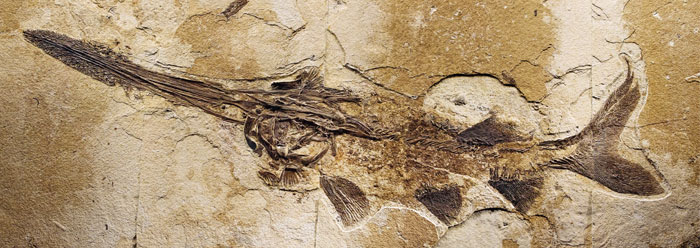Institute for Creation Research scientists documented several clock-like processes in rocks during the groundbreaking Radioisotopes and the Age of the Earth (RATE) project, confirming an age of 6,000 years.1 Remarkably, they found helium--an atom that diffuses rapidly out of rocks and into the atmosphere--trapped in granites, and radiocarbon present in deep diamonds and coal, which should not be possible if they were formed millions of years ago.
Fossil-containing rocks with original animal material add decisive evidence for a young earth. Researchers have uncovered biological molecules like proteins, DNA, and pigments from rocks that are supposedly millions of years old. Laboratory studies on many of these materials indicate that they will only survive thousands, not millions, of years.
DNA is particularly prone to decay, yet ancient fossil "plants, bacteria, mammals, Neanderthals, and other archaic humans have had short aDNA sequences identified."2 Such remnant DNA should not be able to last more than 10,000 years.3 Just as finding the phrase "cell phone" in a reputedly ancient stone inscription would immediately identify it as a fraud, finding a ribosomal gene in bacteria supposedly 250 million years old causes deep suspicion of its assigned age.4
Bones are often fossilized through mineral replacement. However, soft bone and other original biomaterials are continually being discovered. For example, some "fossil" material is actual collagen protein from the original animal. Since laboratory studies have consistently shown that even well-preserved collagen should turn to dust in 30,000 years, these fossils must be much younger than conventional dating indicates.5
The most striking examples of biomaterials that defy old-earth thinking are ancient bones that even have blood vessels. Dinosaur soft tissues have been reported since 1987, but Mary Schweitzer found fresh T. rex femurs in 1991 and 2000, and a hadrosaur femur with blood cells in 2009. She told Science in 1993, "It was exactly like looking at a slice of modern bone. But, of course, I couldn't believe it. The bones, after all, are 65 million years old. How could blood cells survive that long?"6
Some scientists reject experimentally-derived knowledge of molecular decay rates, just so they can uphold the "millions of years" dogma. For example, a BBC News discussion of Brazilian fossilized melanosomes, tiny pigment-containing cells from ancient bird feathers, noted that "somehow [the melanosomes] are retained and replaced during the preservation process and hence you preserve a very lifelike representation of the color banding."7 These melanosomes are a mystery to evolutionary thinking, since they should have been chemically converted to simpler molecules by now, particularly if the fossils are over 100 million years old.
Extra-biblical evidence demonstrating a young earth continues to mount. "Vast eons" are exposed as only a belief that is becoming increasingly difficult to hold. Adherents must maintain it against all odds, though, because to admit that the world is young is to permit the God of the Bible to invade their lives.
References
- Vardiman, L., A. A. Snelling, and E. F. Chaffin, eds. 2005. Radioisotopes and the Age of the Earth, II: Results of a Young-Earth Creationist Research Initiative. El Cajon, CA: Institute for Creation Research; and Chino Valley, AZ: Creation Research Society.
- Criswell, D. 2006. How Soon Will Jurassic Park Open? Acts & Facts. 35 (6).
- Sykes, B. 1991. The past comes alive. Nature. 352 (6334): 381.
- Vreeland, R. H., W. D. Rosenzweig, and D. W. Powers. 2000. Isolation of a 250 million-year old halobacterium from a primary salt crystal. Nature. 407 (6806): 897-900.
- "In bones, hydrolysis [breakdown] of the main protein component, collagen, is even more rapid and little intact collagen remains after only 1-3x104 [10,000 to 30,000] years, except in bones in cool or dry depositional environments." Bada, J., X. S. Wang, and H. Hamilton. 1999. Preservation of key biomolecules in the fossil record: current knowledge and future challenges. Philosophical Transactions of the Royal Society B: Biological Sciences. 354 (1379): 77-87.
- Morell, V. 1993. Dino DNA: The hunt and the hype. Science. 261 (5118): 160.
- Fossil feathers reveal their hues. BBC News. Posted on news.bbc.co.uk July 8, 2008, accessed April 2, 2009.
* Mr. Thomas is Science Writer at the Institute for Creation Research.
Cite this article: Thomas, B. 2009. Fossilized Biomaterials Must Be Young. Acts & Facts. 38 (6): 17.

















